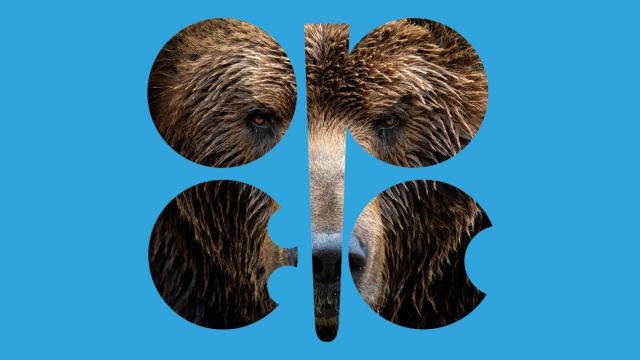
Of the three OPEC+ scenarios, two are bearish for crude prices. (Source: Hart Energy; Magi Bagi, Lubos Chlubny/Shutterstock.com)
Clyde Russell is a columnist for Reuters.
LAUNCESTON, Australia—Crude oil’s strength after OPEC+ canceled talks on increasing output may be short-lived with the ground realities on supply and demand different from what bullish paper investors are choosing to focus on.
OPEC+ ministers called off their talks on July 5 after being unable to reach a compromise with the United Arab Emirates (UAE), which had wanted the parameters of the agreement changed so it could pump more crude.
No new date was set for the next meeting of OPEC+, which groups OPEC and allies including Russia.
At face value this appears bullish for crude prices, as it means that the current output restrictions will remain in place, as opposed to the extra 2 million barrels per day (bbl/d) that the group had proposed to add from August to December.
Global benchmark Brent futures responded positively, ending trade on July 5 at $77.16 a barrel, a rise of 1.3% from the prior close, and reaching the highest since October 2018. At 8:45 a.m. on July 6, Brent was at $76.75.
The price increase could be viewed as a rational response to the OPEC+ developments, but it is also a reaction that doesn’t take into account what is likely to happen, and also what is happening in actual physical crude markets.
Here’s the question for paper crude investors. There are effectively three options for what happens now at OPEC+, two of which are bearish for oil prices and only one bullish. Which is the most likely?
The bullish option is that nothing happens and the output restrictions currently in place remain, and furthermore all members of the group continue to adhere strictly to their quotas.
This is probably the least likely outcome.
The most bearish outcome is that OPEC+ effectively disintegrates and each member pumps as much crude as it desires, sparking a price war as supply overwhelms even the most optimistic post-coronavirus demand projections.
This is also an unlikely outcome as it isn’t in the interests of any of the members of OPEC+ for this scenario to eventuate, and the memories of the price collapse from last year’s brief price war between Saudi Arabia and Russia are still likely fresh in the group’s memory.
The last option, and most likely outcome, is that at some point in the coming weeks OPEC+ is able to hammer out a compromise that results in increases in the group’s production.
While it will take some time for a deal to emerge, the chances must be that it will at least see the 400,000 bbl/d a month increase for the August to December period that was tentatively agreed last week.
It’s also likely to include some form of accommodation for the UAE, which wanted to increase the base output used to calculate its quota by nearly 700,000 bbl/d.
The UAE may not get all of that, but it’s possible it may get some, and there may also be increases in quotas for other members of the group to get everybody on the same page.
This outcome is likely bearish for oil prices, as it does add in substantial volumes by the end of 2020.
Uneven Demand Recovery
Whether this is enough to meet or exceed the expected increase in demand as the world economy recovers from the pandemic remains to be seen.
But what is clear so far is that the recovery is uneven, with countries and regions with high vaccination rates re-opening much faster than those without.
It so happens that those regions with high vaccination rates, namely parts of Europe and North America, are also home to the majority of paper crude oil traders and investors, who may be forming their views based on what they can see in their own backyards.
Certainly crude oil demand has yet to show any significant demand growth in Asia, the top importing region where many countries are still battling coronavirus outbreaks, and the current high crude price is also contributing to demand destruction.
Asia’s top four importing nations—China, India, Japan and South Korea—brought in 20.99 million bbl/d from the seaborne market in June, according to data from commodity analysts Kpler.
This was down from 21.76 million bbl/d in May and 22.08 million bbl/d in April, according to Kpler.
There are also widening differences between the price of paper crude and the price at which physical crude is changing hands, with the Brent-Dubai exchange for swaps,which measures the difference between Brent futures and physical Dubai crude prices, ending at $4.16 a barrel on July 5.
The premium of paper Brent over Dubai was down only slightly from $4.19 on July 2, which was the widest since September 2019.
Physical crude traders report no shortage of available cargoes in Asia and refiners aren’t having to compete among themselves to secure crude, which anecdotally suggests the physical market is nowhere near as tight as the paper pricing suggests.
Recommended Reading
E&P Highlights: April 22, 2024
2024-04-22 - Here’s a roundup of the latest E&P headlines, including a standardization MoU and new contract awards.
Technip Energies Wins Marsa LNG Contract
2024-04-22 - Technip Energies contract, which will will cover the EPC of a natural gas liquefaction train for TotalEnergies, is valued between $532 million and $1.1 billion.
Galp Seeks to Sell Stake in Namibia Oilfield After Discovery, Sources Say
2024-04-22 - Portuguese oil company Galp Energia has launched the sale of half of its stake in an exploration block offshore Namibia.
Aker BP’s Hanz Subsea Tieback Goes Onstream
2024-04-22 - AKER BP’s project marks the first time subsea production systems have been reused on the Norwegian Continental Shelf.



